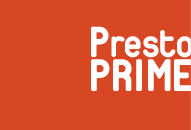Online paper appendix: data replicability
This page is still under development but the final goal of this web page is to allow anybody to replicate all data discussed in our TPDL2011 paper: Interactive Vocabulary Alignment
abstract: In many heritage institutes, objects are routinely described using terms from predefined vocabularies. When object collections need to be merged or linked, the question arises how those vocabularies relate. In practice it often unclear for data providers how well alignment tools will perform on their specific vocabularies. This creates a bottleneck to align vocabularies, as data providers want to have tight control over the quality of their data. We will discuss the key limitations of current tools in more detail and propose an alternative approach. We will show how this approach has been used in two alignment use cases, and demonstrate how it is currently supported by our Amalgame alignment platform.


